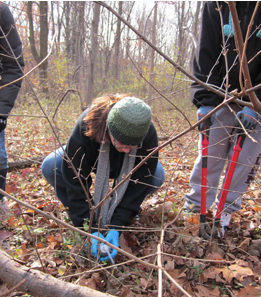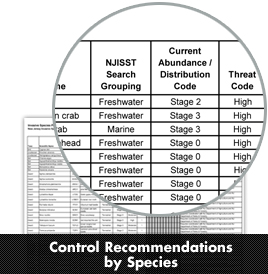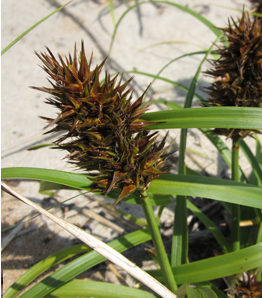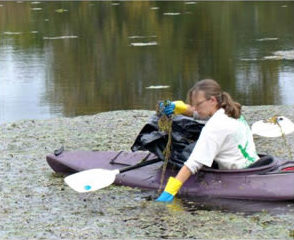Technical Guidance
In order to improve stewardship practices related to invasive species, the Strike Team gathers information on best management practices for each of our target species. This information is updated each year based on our experiences and those shared with use by partners in New Jersey and the surrounding region. We strongly encourage our partners to share information on their experiences, both on strategy and specific herbicides that worked well or didn’t work at all. Please email such information to the Strike Team Program Director
3 Levels of Invasive Species Control
1. Prevention – The methods usually employ outreach or legislation. Examples include encouraging people to stop purchasing invasive landscape plants or banning the movement of firewood to control the spread of invasive insects.
2. Early Detection/Rapid Response – The focus is on identifying invasions as they are emerging in order to prevent them from impacting native species. The goal is to slow the spread or contain target species. In some cases, statewide eradication is possible.
3. Control and Management – The focus is on the protection of sites with high conservation values and includes long-term control programs to reverse larger infestations of widespread species. The goal is restoration of the site.
Plant Control
The Strike Team employs two control methods when eliminating an infestation of invasive plants: mechanical and chemical. Mechanical control is any control performed by hand. Specific strategies including pulling, mowing, cutting or girdling. Chemical control is any control performed through the use of herbicides. Chemical strategies commonly used by the Strike Team are basal bark and foliar spray. There is also the option to use a combination of mechanical & chemical control, such as cutting a plant to the stump and then applying herbicide. This strategy is called cut-stump.
The Strike Team encourages any individual applying herbicide to fully understand the appropriate strategies and safety recommendations, both to protect the health of the applicator and the integrity of the environment. We provide training workshops and on-the-ground training sessions.
Animal & Pathogen Control
The Strike Team partners with various organizations who focus on control or containment of animals (including insects) and pathogens. Please contact us directly if you want to report an observation of or get involved in the control of these species.
NOTE: Licensing is REQUIRED for any person applying herbicide on land that they do not personally own. This applies to employees of conservation groups applying herbicide on their preserved lands as well as to staff of federal, state, county or municipal open space.
The application of pesticides is regulated by the NJ Department of Environmental Protection – Pesticide Control Program (PCP). Visit their website for information on obtaining a pesticide license & regulation information regarding herbicide application in NJ. Those involved with the application of herbicides should become ‘commercial pesticide applicators’ or ‘certified pesticide operators’. In the case of herbicide application to wetland or open water, the DEP requires a permit.
PCP also requires precise record keeping of all herbicide applications (click for sample). Disposal of used herbicide containers requires a triple rinsing of the container followed by puncturing several holes in the container bottom to prevent unauthorized reuse. (Note: Containers are often made of plastic that can be recycled, provided that a triple rinse has been performed. Check with your county for more information.)


Control Recommendations by species. For a full explanation of control categories and their specific strategies, please see the following:
- Invasive Plant – Control Categories
- Invasive Plant – Eradication Strategies
- Invasive Plant – Attribute Summary
Herbicide Resources:
Interactive Map
Check out our interactive map for information about invasive species populations in New Jersey.




